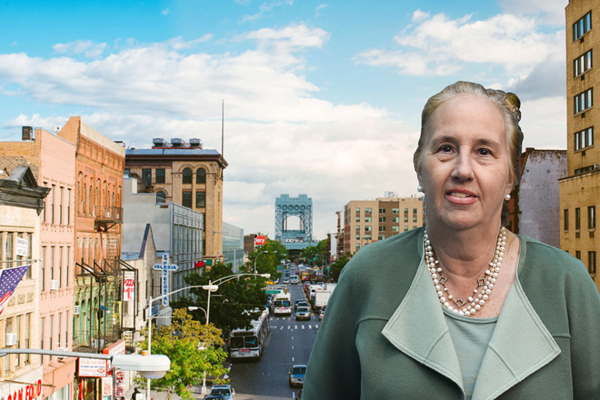Trending
Manhattan BP on East Harlem rezoning proposal: Nope!
Brewer argues plan doesn't protect against displacement

Manhattan Borough President Gale Brewer on Thursday rejected the city’s proposal to rezone East Harlem, arguing that it doesn’t do enough to curb displacement and doesn’t provide adequate housing for the neighborhood’s poorest residents.
The City Planning Commission launched the proposal in April, certifying a plan to rezone 96 blocks in East Harlem. Brewer’s disapproval, which only serves as a recommendation as the rezoning application makes its way through the land use review process, echoes concerns raised by Community Board 11, which rejected the proposal in June.
While the borough president says she supports a rezoning in East Harlem, she argues that the city’s application doesn’t reflect many recommendations outlined in a neighborhood study conducted in 2016. The study emphasized the need to preserve and create affordable housing in a neighborhood that is rapidly gentrifying. According to the study, East Harlem loses nearly 300 units of affordable housing from rent protection and other regulations each year and that average costs for housing are rising at a fast clip.
“A rezoning done the right way offers the opportunity to create many new affordable units, including units affordable to low-income East Harlem residents, while actually reducing the effects of gentrification and reinvigorating neighborhood small businesses and retail,” Brewer said in a statement. “What the administration has put in front of us, however, is rezoning done the wrong way.”
The rezoning proposal calls for a minimum of 20 percent of affordable units to be set aside for tenants earning 30 percent of the area median income or less. Brewer says that residents fear this commitment is “out of reach.” She said projects funded by the city’s Department of Housing Development and Preservation — like La Promesa/Acacia Garden and Lexington Gardens II — set aside 10 to 20 percent of units in this income range.
“We have barely been able to meet that target in most projects on City-owned land,” she states. “If we cannot do it there, success is less likely on private development.”
Brewer also argues that HPD needs to commit to a permanent strategy to curb tenant harassment. As reported by The Real Deal last month, the city’s Housing Court rarely rules in favor or tenants, having only done so in 2 percent of cases brought by tenants between 2014 and 2016. The 2016 study recommended that an anti-discrimination/anti-harassment district be established in East Harlem. While HPD told the study’s steering committee that a citywide version of the anti-harassment district was being drafted, Brewer notes that “several deadlines have passed and we have nothing yet to assure us that it will be in place.”
When asked about the borough president’s recommendation, a spokesperson for Mayor Bill de Blasio said the administration is focused on affordable housing and is working to address concerns raised by officials and residents.
Brewer also argues that the boundaries of the rezoning cram high density into a narrow area, rather than “structured growth” on a scale that matches the neighborhood’s character. The proposal upzones large sections of Park and Third avenues but excludes East 96th Street to East 104th Street. This area, which is close to the Upper East Side and just saw the opening of a new Q-train stop, is growing in value, and so Brewer recommends that it either be subject to mandatory inclusionary housing requirements or preserve affordable housing in the area in another fashion.
If this proposal is ultimately adopted, East Harlem would be the second neighborhood to be rezoned under MIH. Two years ago, Mayor Bill de Blasio set out to rezone 15 neighborhoods. So far, only East New York has been rezoned under the program. As TRD reported last month, there’s been virtually no private development there since the rezoning went into effect.




